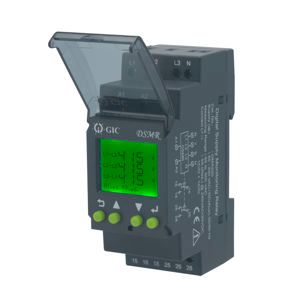
A Phase Failure Relays is a type of control and monitoring relay designed to detect problems typically with a three phase supply but some can be used for single phase applications.
What is a Phase Failure Relay?
A Phase Failure Relays is a type of control and monitoring relay designed to detect problems typically with a three phase supply but some can be used for single phase applications. The conditions which are monitored are Complete Phase Loss, Under Voltage, Over Voltage, Phase Sequence, Phase Asymmetry and Neutral Loss
Phase Failure Relays can also be known as Line Monitoring Relays, Supply Monitoring Relays, Phase Protection Relays or 3 Phase Voltage Monitoring Relays.
Phase Failure Relays can be used on three phase supplies with or without Neutral.
How do they work?
A Phase Failure Relay will have one or multiple relay outputs which are normally in a fail safe configuration. These relays will energise and close the circuit when the supply conditions are within acceptable tolerances. Under one of the above mentioned fault conditions the outputs will become open which will break the circuit and switch off the control system or machinery further down the line to protect it from any damage which may be caused due to unsuitable supply conditions.
Phase Failure Fault Conditions
Phase Loss - This is when one or more phases are no longer present. A Phase Loss can stop a motor from starting or stall if it is already running. If the motor does not stall this will cause a massive imbalance on the supply and can lead to a current increase of up to 600% in the operating phases which can damage your motor by overheating. Monzingers rule states that if a motor runs 10% above it maximum rated temperature, it's working life is reduces by 50%. Heat is your enemy!
Under Voltage - This is when the voltage of one or more phases is under the pre-set minimum limit. Under voltage will make your motor demand more current which may cause damage over time.
Over Voltage - This is when the voltage of one or more phases is over the pre-set maximum limit. Over Voltage its self can cause damage a Motor.
Phase Sequence - This is when the three phases are not connected in the correct sequence. If a motor is started with an incorrect phase sequence it will cause them to start in reverse which may cause damage.
Phase Asymmetry - This is when the load on all three phases is not balanced correctly. If supply is more than 5% out of balance then this can cause damage to AC motors and pumps through thermal stress. Only Phase Failure Relays with Phase Asymmetry monitoring can detect this fault condition.
Neutral Loss - Loss of neutral can cause over-voltage of up to 2 x on down-stream single-phase devices connected between 1 phase and neutral.
How to choose the right Phase Failure Relays for you.
First and foremost you need to know what supply you have on site. It could be 3 Phase 3 wire, or 3 Phase 4 wire. A 3 wire Phase Failure Relay will measure Phase to Phase so have a higher voltage measurement, e.g. 400Vac or 415Vac where a 4 wire device will be measuring Phase to Neutral so have a single phase rating, e.g. 230Vac or 240Vac respectively.
Next you need to know how many output relays you need. Typically you will find either Single or Double pole change-over outputs. If you need more then you can use slave relays.
Lastly you need to know what monitoring functions you need. Obviously you will have phase loss as standard but the rest you can normally find as optional.
At Charter Controls we currently offer over 30 different Phase Failure Relays in our standard range and more if specials are required.





